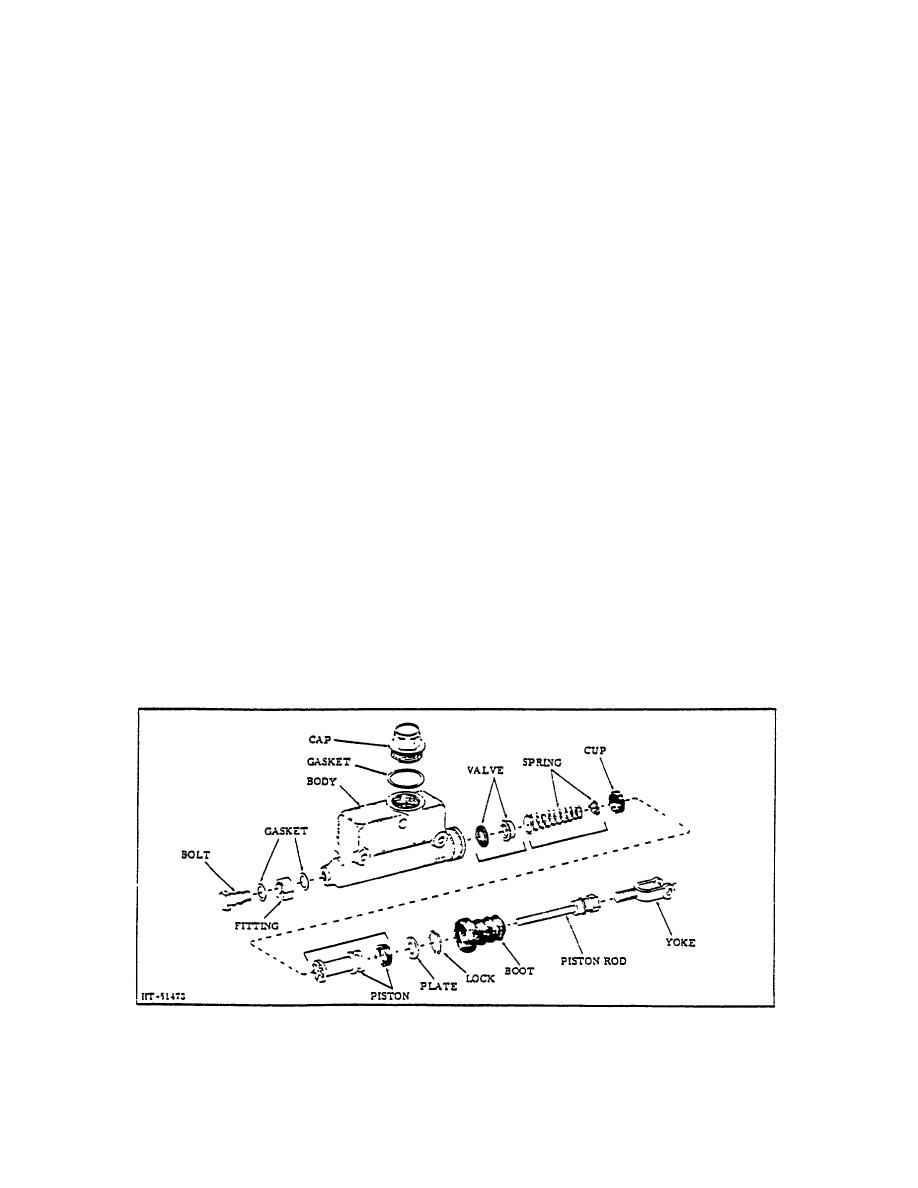 |
|||
|
|
|||
|
|
|||
| ||||||||||
|
|
 TM 10-3930-644-14&P
TOPIC 2. MASTER CYLINDER
A. DESCRIPTION
CAUTION
When lock ring is removed, entire
Brake cylinder and fluid reservoir are combined in one
piston assembly will spring out if not
casting and are joined by intake and by-pass ports
held in place.
located in the cylinder wall. Internal parts are removed
or installed at push rod end. Stop plate holding Internal
8. Carefully remove copper washer, piston, rubber,
parts is retained by a lockwire clipped into cylinder bore.
spring and seat.
Cylinder piston is operated through a push rod
connected to the brake pedal. The push rod and
9. Working from other end of cylinder, remove
cylinder opening Ls enclosed with a rubber boot.
outlet fitting bolt, copper washers, and brake line
fitting.
It is considered impractical to thoroughly clean the
cylinder and fluid reservoir mounted La the truck. For
10. Remove filler cap and all other washers and
this reason follow instructions below.
fittings.
B. REMOVAL
11. Clean hydraulic parts and keep clean so that
there is co trace of dirt, metal filings, sludge, or
1. Remove floor plate.
other deposits when unit is ready for assembly
Do not use cotton waste. Use lint-free cloth in
2. Disconnect brake hydraulic line attached to
cleaning. Internal parts must be cleaned in
master cylinder.
clean denatured alcohol or hydraulic brake fluid.
3. Remove clevis pin securing push rod to brake
CAUTION
pedal assembly.
Mineral base cleaning solvents
(gasoline,
kerosene,
distillates,
4. Remove capscrews holding master cylinder to
carbon tetrachloride, acetone, paint
inside of frame and remove cylinder.
thinners, etc.) deteriorate rubber
parts, causing them to
5. Secure cylinder in vise exercising care so as not
become soft, tacky and swollen.
to distort cylinder or crack the casting.
6. Remove boot and push rod.
Cylinder castings may be cleaned with
usual cleaning methods but must be finish
7. Pry out lock ring holding piston assembly in
cleaned with denatured alcohol or brake
position.
fluid to remove all traces of solvent.
Figure 7. Master Cylinder Assembly
3-151
|
|
Privacy Statement - Press Release - Copyright Information. - Contact Us |